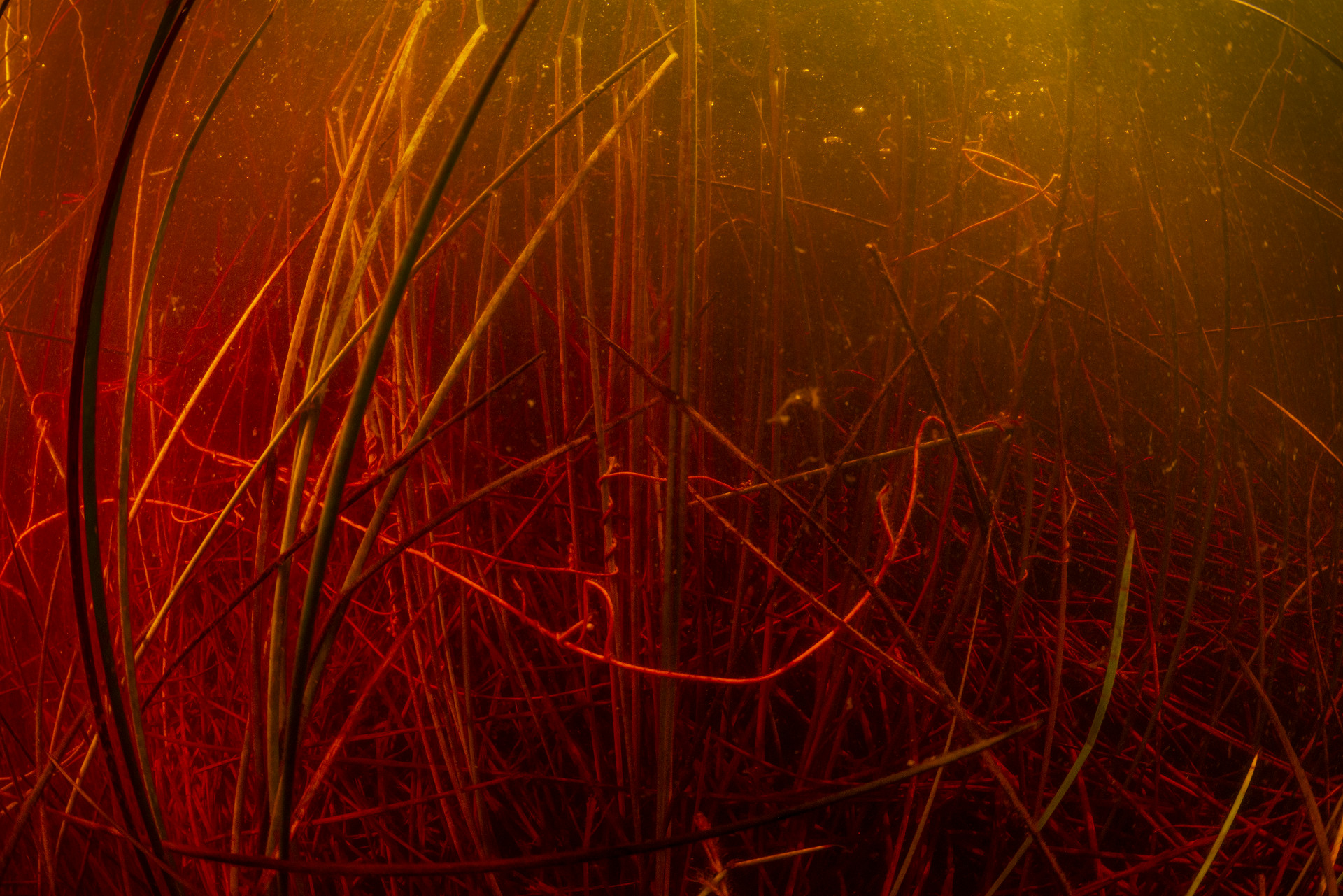|
|
Clarity and colourWater clarity is an optical characteristic of water and is a measurement of the amount of light that is scattered by material in the water when a light is shined through the water[10]. Water in the environment is not usually clear, as sediments, dissolved substances, gases and organic materials affect water clarity in different ways. Clear waters are low in suspended sediments, algae and coloured dissolved organic matter. Turbid waters are high in suspended sediments, algae and coloured dissolved organic matter which absorb and scatter light, clouding visibility[11]. Water clarity determines the light available for growth of macrophytes, algae and biofilms in freshwater, and seagrasses and coral in marine waters. Water colour is the result of light back scattered upward from the water after it has passed through to various depths and undergone selective absorption. Water colour can affect aquatic plants and algal growth, the amount of light that can travel through water, and which colour wavelengths are able to reach deeper water (photic depth)[8]. Water clarity (or transparency) is an indicator of how far light can penetrate through the water column[11] and is important for aquatic ecosystems, drinking water, aesthetics and recreational values. The ANZECC 2000 (Vol 1) identifies guideline values of water clarity for swimming or recreational use to provide confidence and safety and ensure obstructions and dangers can be seen. High levels of algae or sediment contribute to low clarity, reduce chlorine treatment effectiveness, increase pathogen risk and water treatment costs[7]. Water clarity can be assessed in a number of ways, including by Secchi depth, light attenuation, photosynthetically active radiation (PAR), euphotic depth (measured as depth at which 1% of surface PAR remains), and turbidity. Water clarity can impact water colour in numerous ways. Water colour is measured as either true colour or apparent colour[4]. As plants require light to grow and undertake photosynthesis, disruption to light availability can negatively impact aquatic plants, and the organisms that feed on them[3]. Water clarity determines the light available to benthic substrates, submerged plants and plankton. Low nutrient, high water clarity conditions favour the dominance of macrophytes. Disturbance from elevated nutrients and/or turbidity resulting in low water clarity can shift a wetland to have turbid, nutrient rich water, which then favours phytoplankton[9][5]. Feedback mechanisms between low clarity, high nutrients and turbidity prevent regrowth of macrophytes. Certain corals prefer clear water, while others have adapted to the low light conditions of turbid water. In marine environments with low water clarity, autotrophs such as corals may become dominated by taxa capable of heterotrophy, such as Goniopora and Turbinaria[2]. Reduced water clarity can indicate negative impacts of development and human activity on a waterbody. Water clarity may be reduced through excessive erosion and transport of sediment derived from land clearing, agricultural practices or construction activities. Erosion control in coastal catchments may contribute to health of coastal waters by preventing transport of suspended sediments to the coast, where they can impact seagrass, seaweed and corals through reducing light availability[1][6]. References
Last updated: 11 September 2023 This page should be cited as: Department of Environment, Science and Innovation, Queensland (2023) Clarity and colour, WetlandInfo website, accessed 8 May 2025. Available at: https://wetlandinfo.des.qld.gov.au/wetlands/ecology/components/water-physical/clarity/ |

 — Department of the Environment, Tourism, Science and Innovation
— Department of the Environment, Tourism, Science and Innovation


